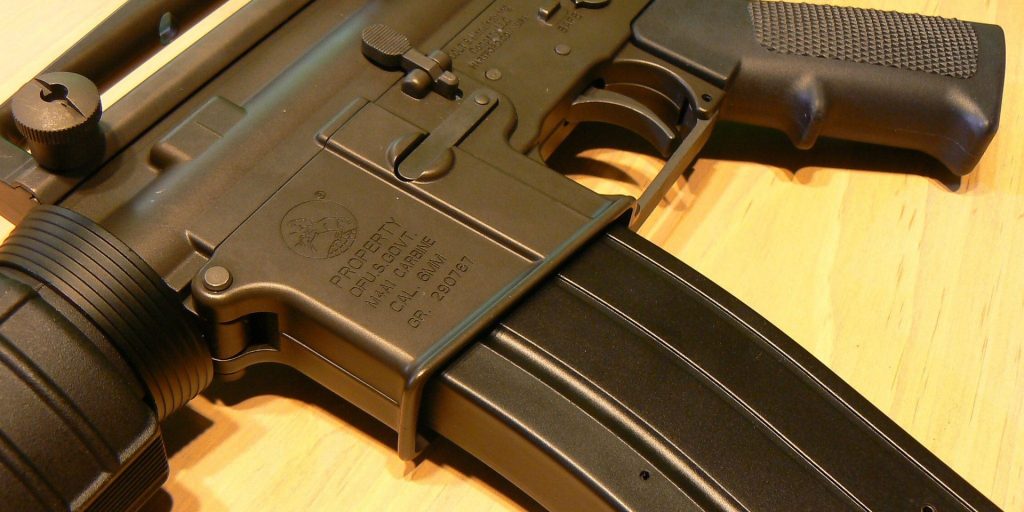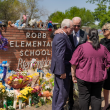Bipartisan group of local leaders, NLC send letter to Congress calling for gun safety legislation
In the aftermath of several horrific mass shootings, legislators in Washington, D.C. are locked in a familiar debate over gun safety legislation. On Wednesday, survivors and victims of gun violence testified about their experiences to Congress, calling on lawmakers to take action.
“I don’t want it to happen again,” said Miah Cerrillo, a fourth-grader at Robb Elementary School and survivor of the tragedy in Uvalde, Texas last month, in a pre-recorded video made for lawmakers. Cerrillo said she hid when the shooting began and called 911 after a teacher was killed in front of her.
The most recent shootings re-started a conversation about gun safety measures to prevent mass shootings that began with the Columbine High School massacre in 1999. Speaking at the U.S. Conference of Mayors’ annual meeting recently, Chicago Mayor Lori Lightfoot reflected a sense of powerlessness many administrators are feeling—there’s only so much local government can do to quell gun violence.
“If there was a magic solution to this problem, all of us would have committed to it already,” she said during a press conference before the weekend event began. Universally, advocacy organizations representing local administrators have asked the federal government to take action on gun safety measures.
On Wednesday, the National League of Cities (NLC) sent a letter signed by more than 500 mayors, council members and other local elected officials from every United States jurisdiction to Congress urging expedited action on “stronger laws that keep guns out of the hands of violent individuals and support stronger mental health systems,” according to a statement from the advocacy organization. “Local leaders see the horrific impacts of gun violence on their residents firsthand. They attend funerals and vigils, cry with community members, and have worked to adopt policies and programs aimed at preventing future tragedies. While action at the local level is important, federal action is also needed and long past due.”
Signers included Democrats, Republicans and Independents.
Among other measures, the letter calls for a crackdown on the illegal sale and distribution of firearms; a required 30 day waiting period after purchasing a weapon so local police agencies can run mental health and criminal background checks; and a ban on all semi-auto and automatic “assault-style weapons.”
The letter also calls for the passage of red flag laws, or the power to remove weapons from someone who’s deemed to be a risk to themselves and others. Other actions include tougher laws on background checks, increased funding to the Centers for Disease Control for targeted violence reduction measures, better access to physical and mental health care, and the establishment of “a national commission that consists of federal, state, and local officials, gun rights advocates, survivors of gun violence, law enforcement officials, and medical and mental health providers to recommend legislative solutions aimed at reducing gun violence in the United States,” the statement says.
Beyond federal action, there are steps local administrators can take, according to the Center for American Progress, which advertises itself as an independent policy institute.
“We simply cannot continue living under the daily threat of gun violence,” said Eugenio Weigend Vargas, director of gun violence prevention at the center, noting gun prevalence and violence are intrinsically linked. “Gun violence—not criminal justice reform—has been the primary driver of rising crime rates. If policymakers are serious about stopping crime, gun violence prevention laws must be at the top of their agendas.”
According to an analysis led by Weigend Vargas, homicides rose nationally by 28 percent from 2019 to 2020. The increase was driven by a “dramatic rise in gun-related homicides.” Gun homicides rose in 2020 by 35 percent; eight out of every 10 homicides that same year were perpetrated with a gun. Another concerning statistic is that guns continue to be the leading cause of death for children and teens, surpassing vehicles in 2019.
Faced with this troubling data, cities and counties can target the the root causes of gun violence through trauma- and racial equity-informed community-based approaches like street outreach programs (which equip respected community members to interrupt violence before it happens). Organizations can also improve data collection, protect survivors of domestic violence, partner with schools, create offices of gun violence prevention and provide facilities where veterans and others people can temporarily store their firearms if they’re in a state of crisis.
“Every year, thousands of veterans lose their lives to gun suicides. Establishing areas where they can safely store their firearms in moments of crisis is crucial,” a statement from the Center for American Progress says.




















